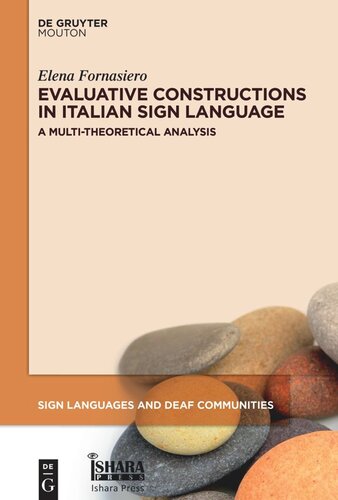

Most ebook files are in PDF format, so you can easily read them using various software such as Foxit Reader or directly on the Google Chrome browser.
Some ebook files are released by publishers in other formats such as .awz, .mobi, .epub, .fb2, etc. You may need to install specific software to read these formats on mobile/PC, such as Calibre.
Please read the tutorial at this link: https://ebookbell.com/faq
We offer FREE conversion to the popular formats you request; however, this may take some time. Therefore, right after payment, please email us, and we will try to provide the service as quickly as possible.
For some exceptional file formats or broken links (if any), please refrain from opening any disputes. Instead, email us first, and we will try to assist within a maximum of 6 hours.
EbookBell Team

0.0
0 reviewsThe domain of evaluative morphology is vast and complex, as it requires the combination of morphological, semantic and pragmatic information to be understood. Nevertheless, cross-linguistic studies on spoken languages show that languages share some patterns in the way they encode evaluative features. It follows that investigating evaluative morphology in sign languages (SLs) can enrich the literature and offer new insights. This book provides descriptive and theoretical contributions by considering Italian Sign Language (LIS) as empirical ground of investigation. At the descriptive level, the analysis of corpus and elicited data improves the description of morphological processes in LIS, as well as typological studies on evaluative morphology by adding the patterns of a visuo-gestural language. At the theoretical level, the study shows the benefit of combining different approaches (Generative Linguistics, Linguistic Typology, Cognitive Linguistics) for the exploration of evaluative constructions in SLs, as it allows to identify both modality-specific and modality-independent properties.
In sum, this book encourages the readers to rely on different data types, analyses and theoretical perspectives to investigate linguistic phenomena in SLs.